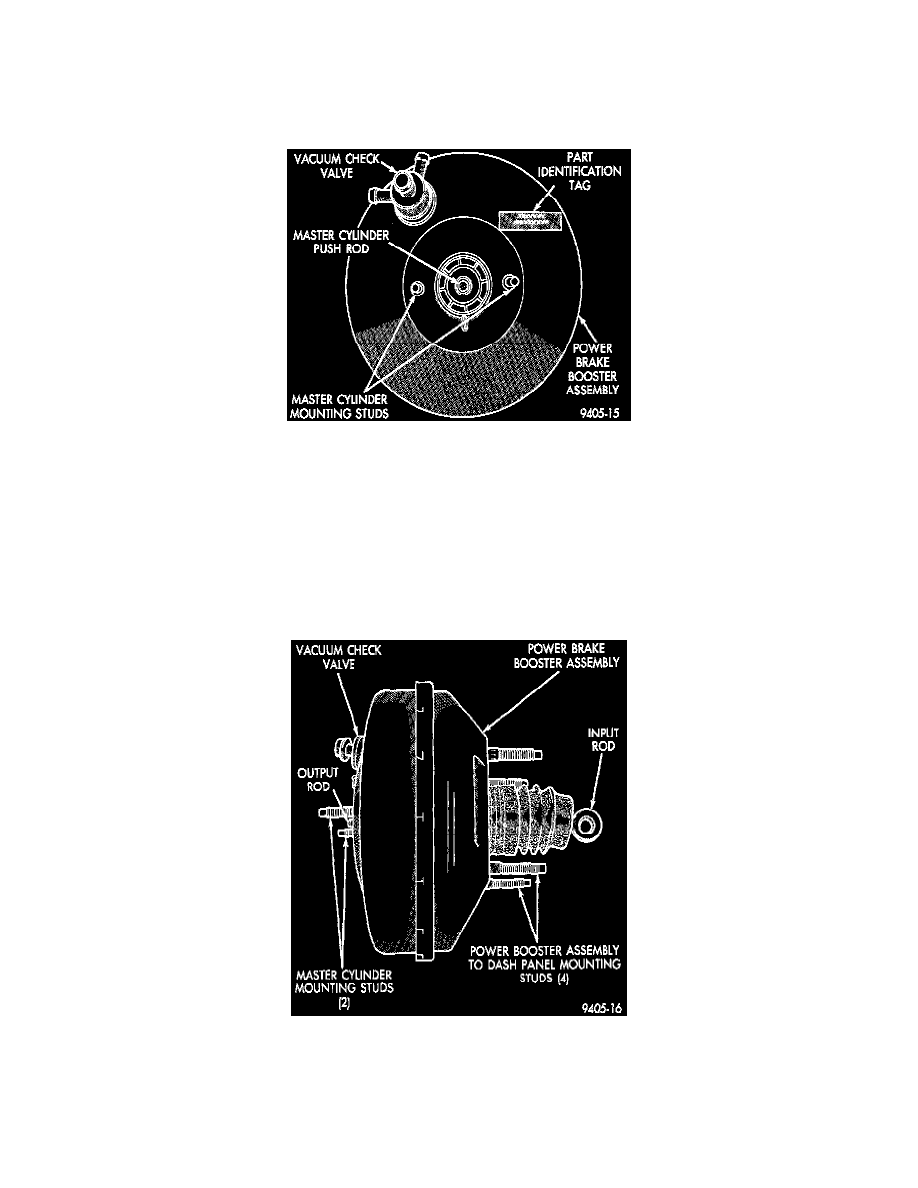Stratus L4-2.4L VIN X (1998)

Vacuum Brake Booster: Description and Operation
Without ABS
All vehicles use a 205 mm tandem diaphragm power brake vacuum booster. The power brake vacuum booster though, may be unique for the type of
brake system the vehicle is equipped with. For this reason, if the power brake vacuum booster requires replacement, be sure it is replaced with the correct
part for the type of brake system that the vehicle is equipped with.
Power Brake Booster Identification
The power brake booster can be identified if required, by the tag attached to the body of the booster assembly. This tag contains the following
information: The production part number of the power booster assembly, the date it was built, who manufactured it, and brake sales code.
NOTE: The power brake booster assembly is not a repairable part and must be replaced as a complete unit if it is found to be faulty in any way. The
power booster vacuum check valve is not repairable but can be replaced as an assembly.
The power brake booster reduces amount of force required by the driver to obtain the necessary hydraulic pressure to stop vehicle.
The power brake booster is vacuum operated. The vacuum is supplied from the intake manifold on the engine through the power brake booster check
valve.
Power Brake Booster Assembly
As the brake pedal is depressed, the power boosters input rod moves forward. This opens and closes valves in the power booster, allowing atmospheric
pressure to enter on one side of a diaphragm. Engine vacuum is always present on the other side. This difference in pressure forces the output rod of the
power booster out against the primary piston of the master cylinder. As the pistons in the master cylinder move forward this creates the hydraulic
pressure in the brake system.
